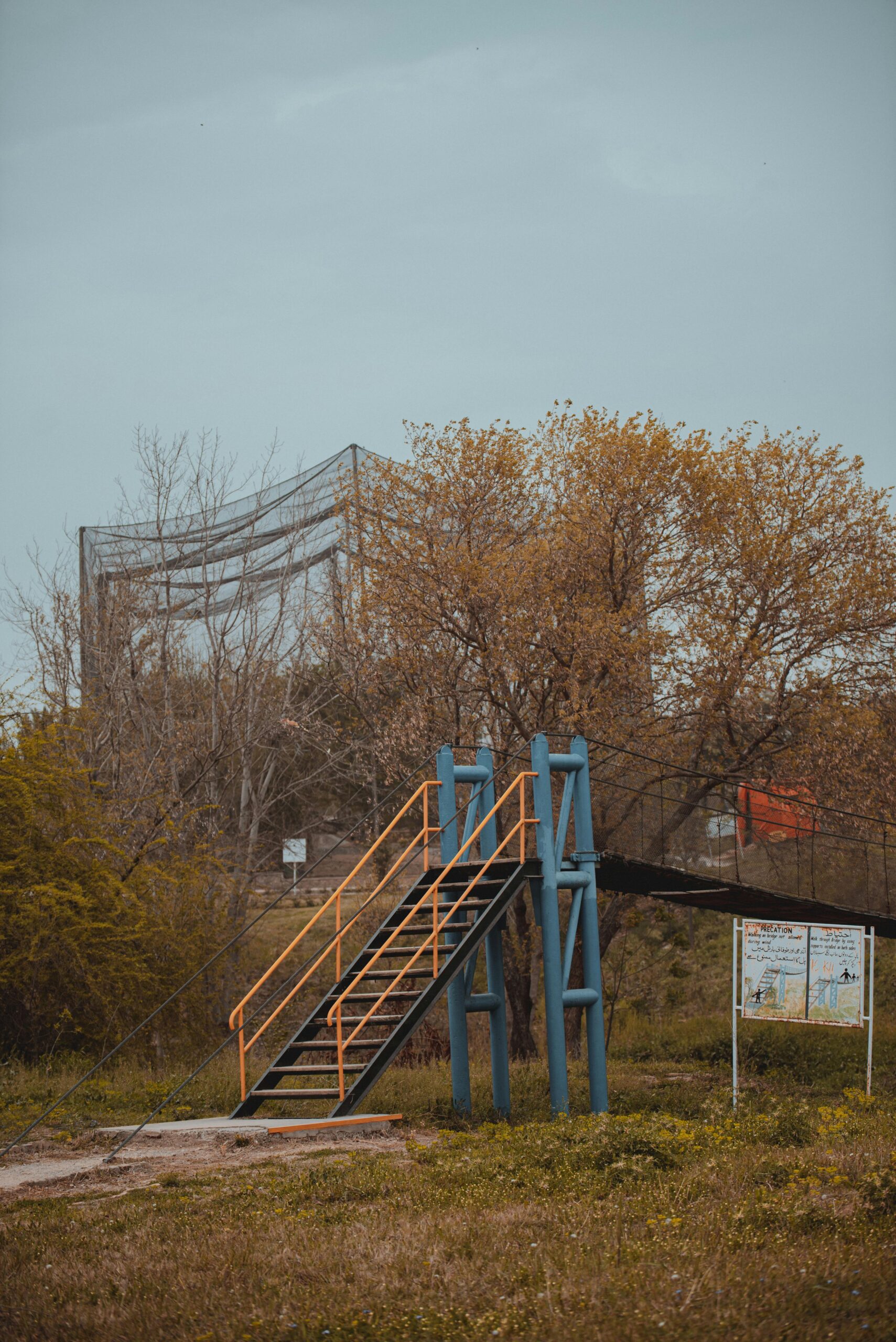Iron Rate In Pakistan: Discover Why Prices Are Changing Rapidly and iron rate in pakistan
The iron rate in Pakistan has been a hot topic lately, with prices fluctuating more rapidly than ever before. Have you ever wondered why the steel and iron prices in Pakistan keep changing so unpredictably? This article dives deep into the factors driving these shifts and what it means for consumers, businesses, and the construction industry. If you’re struggling to keep up with the latest iron price updates in Pakistan, then you’re in the right place to get all the answers.
In recent months, the iron prices in Pakistan 2024 have shown significant volatility, leaving many contractors and homeowners puzzled. This rapid change is influenced by multiple critical factors like global metal market trends, local demand and supply dynamics, and government policies impacting the steel industry. Moreover, the ongoing fluctuations in raw material costs for iron manufacturing and import tariffs are playing a major role in shaping the current iron rate in Pakistan. Understanding these components can help you make smarter decisions whether you’re buying for personal use or business purposes.
Are you curious about how international events and local economic conditions affect the iron and steel market in Pakistan? Stay tuned as we break down the most important influences on the iron rate in Pakistan today, including the impact of currency devaluation, rising transportation costs, and inflation. Don’t miss out on the crucial insights that could save you money and optimize your purchasing strategy in this unpredictable market. Keep reading to unlock everything you need to know about the ever-changing iron prices in Pakistan and what to expect moving forward.
Top 5 Factors Driving the Rapid Changes in Iron Rate in Pakistan in 2024
The iron rate in Pakistan has been fluctuating wildly in 2024, leaving many people wondering why prices are changing so rapidly. From builders to consumers, the unpredictability of iron prices affects almost everyone in the country’s economy. Pakistan, being a developing nation, heavily relies on iron for construction and manufacturing, and any change in iron rate can create a ripple effect in various sectors. But what exactly causing these sharp twists in iron prices? Here are the top 5 factors driving the rapid changes in iron rate in Pakistan in 2024.
1. Global Raw Material Supply Disruptions
One big reason behind iron rate fluctuations is the global supply of raw materials used to make iron and steel. Pakistan imports a significant portion of raw iron ore and scrap from other countries. Due to geopolitical tensions, trade restrictions, and shipping delays, the availability of these raw materials has become unstable. For example, iron ore prices surged when some iron-producing nations reduced exports or faced labor strikes in mines. When supply chains are interrupted, manufacturers in Pakistan have to pay more which then push iron prices upwards. This pattern has been repeating through the year causing sharp price spikes.
2. Increase in Domestic Demand for Construction
Pakistan has been experiencing a construction boom recently, especially in urban areas like Karachi, Lahore, and Islamabad. Government infrastructure projects, housing schemes, and private developments demand large quantities of iron. When demand shoots up and supply does not keep pace, prices naturally increase. The construction sector’s rapid growth in 2024, fueled by both public and private investments, is a major contributor to the rising iron rate. Builders often report that the iron prices change almost weekly, making project budgeting quite difficult.
3. Fluctuation in Currency Exchange Rates
Since Pakistan imports many of its raw materials, the exchange rate between the Pakistani Rupee (PKR) and US Dollar (USD) plays a crucial role in determining iron prices. When the PKR weakens against the USD, the cost of imported materials rise. This means manufacturers have to pay more to get the same amount of raw iron ore or scrap metal. In 2024, the PKR has been quite unstable due to economic pressures and inflation, leading to a direct impact on iron prices. Even a small change in exchange rate can cause a noticeable jump or drop in iron rate making the market very volatile.
4. Energy Costs and Production Expenses
Producing iron and steel is energy intensive. Pakistan’s energy prices, including electricity and fuel, have been rising steadily in 2024. When power tariffs increase, factories’ operational costs go up which manufacturers pass on to consumers in the form of higher iron prices. Additionally, some local steel mills face frequent energy outages or rely on expensive fuel alternatives. This inconsistency and hike in energy costs push production expenses higher. For example:
Energy Cost Impact on Iron Price in 2024
| Energy Type | Cost Increase (%) | Effect on Iron Price |
|---|---|---|
| Electricity | 15% | +5% to +7% |
| Diesel/Fuel | 20% | +3% to +5% |
| Natural Gas | 12% | +2% to +4% |
This table shows how energy costs relate to iron price changes, indicating production expenses being a significant driver.
5. Government Policies and Import Duties
Government regulations also affect the iron rate in Pakistan. In 2024, the government made some changes in import duties and taxes on steel and raw materials. Sometimes duties are raised to protect local industries, but this also increases the cost of imported raw materials. On the other hand, sudden policy shifts or delays in approvals can create uncertainty in the market. Traders and producers become hesitant to make big purchases, causing price instability. Moreover, price controls or subsidies, if introduced inconsistently, can distort the usual supply-demand balance. Here’s a quick list of government interventions influencing iron prices:
- Import duty adjustments on steel and iron ore.
- Tax changes affecting manufacturers.
- Subsidies or relief packages for construction sectors.
- Regulatory delays impacting supply chain efficiency.
These policies, while meant to stabilize or promote local industries, sometimes have unintended consequences leading to price volatility.
Historical Context: Iron Rate Trends in Pakistan
Looking back, iron prices in Pakistan have never been very stable. During the last decade, prices saw several ups and downs due to global steel market trends, local demand surges, and political-economic changes. For instance, in 2018-2019, iron prices jumped sharply due to China’s steel production cuts and infrastructure projects in Pakistan. Then in 2020, the pandemic caused a temporary slump followed by a rapid rebound in 2021. The current year’s fluctuations continue this trend of irregular price patterns but seem more intense due to overlapping factors like energy crises and currency issues.
Practical Examples from
How Global Market Trends Are Impacting Iron Prices in Pakistan Today
How Global Market Trends Are Impacting Iron Prices in Pakistan Today
In recent months, many people in Pakistan been noticing rapid changes in the iron rate, sparking curiosity and concern among builders, contractors, and daily consumers. Pakistan’s iron market does not operate in isolation; it’s deeply influenced by global trends that often cause sudden price fluctuations. Understanding why the iron price changing so quickly in Pakistan requires looking beyond local factors, into global supply-demand dynamics, geopolitical tensions, and economic shifts. This article will explore these aspects, shedding light on how worldwide events shape iron prices in Pakistan today.
Why Iron Prices Matter So Much in Pakistan
Iron is one of the most essential materials in Pakistan’s construction and manufacturing sectors. From building skyscrapers in Karachi to making household appliances, iron’s demand remains high. The iron rate in Pakistan directly affects the cost of construction projects, infrastructure development, and even job creation. When iron prices rise sharply, it can slow down projects, increasing overall expenses for companies and consumers alike.
Historically, Pakistan’s iron industry relied heavily on imports, making it vulnerable to the changes in international markets. Domestic production meets only a part of the demand, so any disruption or change in global iron prices immediately reflect locally. For example, if the global price per ton increases by 10%, Pakistan often sees a similar spike after import duties and transportation costs added.
Global Market Trends Affecting Iron Prices
Several global trends have been driving iron prices up and down recently. These trends are complex and often interconnected, but some key factors are:
- China’s Steel Production Cuts: Being the largest steel producer, China’s policies greatly influence iron prices worldwide. Recently, China has cut down its steel output to reduce pollution which reduces iron ore demand, but sometimes causes iron ore prices to fluctuate unpredictably.
- Raw Material Shortages: Iron ore and coal are critical raw materials in iron production. Any shortage due to mining disruptions, strikes, or transportation issues causes raw material prices to soar, pushing iron prices higher globally.
- Geopolitical Tensions: Conflicts or trade restrictions between major economies can restrict supply chains. For example, tariffs imposed by the USA on steel imports or sanctions on certain countries disrupt the free flow of materials.
- Currency Exchange Rates: Since iron is traded globally mostly in US dollars, the fluctuation of the Pakistani rupee against the dollar affects import costs directly. When the rupee weakens, importing iron becomes more expensive.
- Energy Prices: Iron production is energy-intensive. Rising global oil and gas prices increase manufacturing costs, indirectly pushing iron prices upwards.
Comparing Iron Rates: Pakistan vs. International Market
To better understand how global trends influence local prices, here’s a simple comparison of iron rates (per 40 kg bundle) in Pakistan and international markets over the last 6 months:
| Month | Iron Rate in Pakistan (PKR) | International Iron Price (USD per ton) | Exchange Rate (PKR/USD) |
|---|---|---|---|
| January | 12,500 | 120 | 225 |
| February | 13,200 | 125 | 227 |
| March | 14,000 | 130 | 230 |
| April | 13,800 | 128 | 232 |
| May | 15,200 | 135 | 235 |
| June | 15,500 | 138 | 237 |
This table shows, although international prices change moderately, the iron rate in Pakistan can jump more sharply due to currency depreciation and local taxes. The rise from January to June in Pakistan’s market is about 24%, whereas the international price increased by around 15%, indicating local factors amplifying global trends effect.
Historical Context: Iron Prices in Pakistan Over The Years
To put today’s rapid changes into perspective, it helps to glance back at Pakistan’s iron price trends from the past decade:
- Early 2010s: Iron prices were relatively stable, with minor annual increases.
- Mid-2010s: Increased infrastructure projects led to higher demand, causing steady price rises.
- 2018-2019: Political instability and currency devaluation pushed prices upwards sharply.
- 2020: COVID-19 pandemic caused temporary price drops due to slow construction activity.
- 2021-2023: Recovery and global supply chain issues resulted in volatile and often rising iron rates.
The rapid changes now are not entirely new, but the pace and unpredictability have intensified, making it harder for businesses to plan budgets.
Practical Examples of Impact on Pakistan’s Economy
- Construction Sector: Builders in Karachi and Lahore often report project delays when iron prices spike unexpectedly. This increases overall housing costs, hitting middle and lower-income buyers hard.
- Small Contractors:
Why Is the Iron Rate in Pakistan Fluctuating? Key Insights for Buyers and Sellers
The iron rate in Pakistan has been changing a lot lately, which leaves many buyers and sellers wondering about the reasons behind this. Prices don’t stay stable for long, and it’s not always easy to predict when they will go up or fall down. Understanding why the iron rate in Pakistan fluctuates can help people make better decisions whether they are planning to buy or sell. This article try to explain the main factors causing these rapid price changes and what it means for the market players.
What Makes Iron Prices Change So Often?
Iron prices in Pakistan are influenced by many things, some local and some global. One big reason is the cost of raw materials. Pakistan imports a lot of scrap iron and raw materials needed for producing iron products. When the international prices for these materials change, the local iron rate also changes. For example, if China or India increase their demand for steel and iron, it affects the global price and Pakistan will feel the effect soon after.
Another reason is the exchange rate of Pakistani Rupee against the US Dollar. Since many raw materials are imported, if the rupee weakens, it means importers have to pay more. This extra cost usually passes on to the buyers, pushing iron prices higher. On the other hand, a stronger rupee can help reduce prices a bit.
Historical Context of Iron Rate in Pakistan
Iron and steel industry in Pakistan has always been quite sensitive to economic changes. In the early 2000s, iron prices were quite stable because of low international demand and steady local production. But after 2010, as the construction sector grew rapidly, demand for iron surged, causing prices to rise sharply. More recently, government projects like infrastructure development under CPEC (China-Pakistan Economic Corridor) have boosted demand even more.
However, price fluctuations have become more noticeable during the last five years because of global trade tensions, pandemic disruptions, and energy crises. For example:
- During 2020, COVID-19 lockdowns caused a temporary drop in demand, lowering prices.
- In 2021, prices spiked due to supply chain issues and increased demand post-lockdown.
- Energy shortages in Pakistan have also affected production costs, pushing prices upward.
Factors Affecting Iron Rate in Pakistan
To understand the iron rate better, here is a list of main factors causing changes:
- Global Raw Material Prices: Iron ore, scrap metal prices in international markets.
- Currency Exchange Rates: Fluctuations between PKR and USD.
- Demand from Construction Sector: New buildings and infrastructure increase demand.
- Government Policies and Taxes: Import duties, tariffs, and subsidies affect costs.
- Local Production Capacity: Availability of domestic iron and steel manufacturing.
- Energy Costs: Electricity and gas prices impact manufacturing expenses.
- Market Speculation: Traders’ expectations and stockpiling can cause price swings.
- Transportation Costs: Fuel prices and logistics affect delivery expenses.
Comparison: Iron Prices in Pakistan Vs Neighboring Countries
| Country | Iron Rate Trend | Main Influencing Factors |
|---|---|---|
| India | Generally rising | Strong industrial growth, import costs |
| China | Stable to increasing | Large domestic production, government control |
| Bangladesh | Fluctuating | Import dependency, infrastructure projects |
| Pakistan | Highly fluctuating | Currency instability, energy shortages |
As seen, Pakistan’s iron rate is more volatile compared to its neighbors mainly because of unstable currency and energy supply. India and China have more stable domestic production which helps smooth out prices.
Practical Tips for Buyers and Sellers
For those involved in buying or selling iron in Pakistan, it’s important to keep an eye on several things:
- Monitor Exchange Rates: Since currency changes affect costs, tracking PKR-USD rates helps predict price moves.
- Watch Global Market News: News about steel demand in China, India, or other big economies can signal upcoming price changes.
- Plan Purchases Smartly: Buying in bulk when prices are low and avoiding panic buying during spikes can save money.
- Keep Updated on Local Policies: Government announcements about tariffs or taxes can immediately impact prices.
- Factor in Energy Costs: Higher electricity or gas prices usually mean higher iron costs.
- Build Good Supplier Relationships: Reliable suppliers might offer better prices or flexible payment terms during volatile times.
Table: Recent Iron Rate Trends in Major Pakistani Cities (in PKR per kg)
| City | January 2024 | March 2024 | May 2024 |
|---|---|---|---|
| Karachi | 140 | 155 | 160 |
| Lahore | 138 | 152 | 158 |
| Islamabad | 142 | 157 | 162 |
| Multan | 135 |
The Ultimate Guide to Understanding Current Iron Rate Trends in Pakistan
The Ultimate Guide to Understanding Current Iron Rate Trends in Pakistan
Iron is one of the most crucial materials in Pakistan’s economy, especially in construction and manufacturing sectors. Recently, many people in Karachi and across Pakistan been puzzled by the rapid changes in iron rates. Why prices are fluctuating so fast? What factors driving these shifts? This article will try to explain iron rate in Pakistan, explore the reasons behind price changes, and provide useful insights for consumers, builders, and investors.
What is the Current Iron Rate in Pakistan?
As of June 2024, the iron rate in Pakistan varies depending on the type and quality of iron, and location of purchase. The approximate price for standard iron rebar in Karachi is around PKR 190,000 to PKR 210,000 per ton. This price range change every week, sometimes even daily, driven by multiple domestic and international factors. In smaller cities or rural areas, prices may differ slightly due to transport costs and supply availability.
Historical Context: How Iron Prices Have Changed Over Time
Understanding the current iron rates need looking back at history. Over the past decade, iron prices in Pakistan have generally increased with some ups and downs due to global market changes. For example:
- In 2014, the average iron rate was about PKR 80,000 per ton.
- By 2018, it nearly doubled to around PKR 150,000 per ton.
- The pandemic years (2020-2021) caused disruptions in supply chains, pushing prices even higher.
- Recently, inflation and currency depreciation have further increased costs.
These fluctuations show that iron prices are very sensitive to economic policies, global demand, and local production capabilities.
Why Are Iron Prices Changing Rapidly in Pakistan?
Several reasons contribute to the fast-changing iron rates:
- Raw Material Costs: Pakistan imports a large portion of its iron ore and scrap metal. When international iron ore prices rise, local iron producers have to pay more, pushing up domestic prices.
- Currency Fluctuations: The Pakistani Rupee has faced devaluation against the US Dollar. Since iron imports are paid in dollars, a weaker rupee means higher costs in local currency.
- Demand and Supply Gaps: Construction activities, especially in Karachi and other big cities, have surged. This increases demand for iron but sometimes local production cannot meet it timely.
- Government Policies: Taxes, import duties, and regulations affect iron pricing. Sudden changes in tariffs or restrictions on imports can create price shocks.
- Transportation and Fuel Prices: Rising fuel costs increase logistics expenses. This indirectly affects iron prices across all regions.
Comparison of Iron Rate in Pakistan with Other Countries
To understand Pakistan’s iron prices better, it’s useful to compare with neighboring countries:
| Country | Iron Rate per Ton (approx.) | Notes |
|---|---|---|
| Pakistan | PKR 190,000 – 210,000 | Highly affected by imports |
| India | INR 55,000 – 60,000 | Larger domestic production |
| China | CNY 3,800 – 4,200 | World’s largest producer |
| Iran | IRR 250 million | Local production with some imports |
*Note: Prices converted to local currency as per June 2024 market rates.
Pakistan’s iron price is generally higher than India because India produces more iron domestically and has a more stable supply chain. China’s prices are lower due to massive production capacity. This difference affects construction costs and competitiveness for Pakistani industries.
Factors Affecting Iron Rate in Pakistan – Detailed List
- Global iron ore market trends
- Local production capacity and efficiency
- Exchange rates and currency stability
- Government taxation and import duties
- Demand from construction and manufacturing sectors
- Energy and fuel costs for production and transportation
- Political stability and policy predictability
- Supply chain disruptions due to natural disasters or pandemics
Every factor can have varying impact depending on time and region, making predicting prices very difficult.
Practical Examples: How Iron Rate Changes Impact You
If you are a builder in Karachi planning a new project, these iron price fluctuations can make budget planning tricky. For example:
- A sudden 10% increase in iron prices can add tens of thousands of rupees to material costs.
- Delays in purchase hoping for price drops can backfire if prices rise further.
- Contractors may increase labor and service charges because of increased material costs.
Homeowners and small businesses also feel the impact indirectly through increased construction costs or product prices.
Tips to Navigate Iron Rate Volatility
- Monitor market trends regularly: Follow trusted sources and local market updates.
- Bulk purchase when possible: Buying larger quantities may lock prices and reduce risk.
- Consider alternative materials: Sometimes using steel or composite materials can lower costs
Iron Rate in Pakistan Explained: What’s Causing the Price Surge and How to Stay Updated
Iron Rate in Pakistan Explained: What’s Causing the Price Surge and How to Stay Updated
In recent months, the iron rate in Pakistan has been fluctuating rapidly, leaving many construction workers, business owners, and consumers worried about how to manage rising costs. Iron, being a fundamental material for construction and infrastructure, plays a vital role in Pakistan’s economy. But why these sudden price surges? And how can individuals stay updated to make informed decisions? This article tries to break down the main factors behind these changes and offer practical tips on tracking the iron rate in Pakistan.
Why Are Iron Prices Changing Rapidly in Pakistan?
The iron rate in Pakistan is not something that moves randomly; it’s influenced by various internal and external factors. Some of the key reasons behind this volatility are:
- Global Market Influence: Iron prices in Pakistan depend heavily on the international market. When global iron ore prices rise or fall, local prices follow. For example, disruptions in major iron-producing countries like Australia or Brazil impact supply and push prices higher.
- Currency Fluctuations: Pakistan’s currency value against the US dollar affect import costs. When the Pakistani rupee weaken, importing iron becomes more expensive, which eventually leads to higher prices for consumers.
- Government Policies and Taxes: Changes in taxes, duties, or import restrictions directly impact iron prices. Sometimes, new tariffs or regulatory adjustments cause sudden spikes.
- Demand and Supply Dynamics: With Pakistan’s growing infrastructure projects, demand for iron has increased significantly. When demand outpaces supply, iron prices naturally soar.
- Transportation and Logistic Costs: Rising fuel prices and transportation hurdles can increase the overall cost of iron delivery, contributing to price rises.
- Seasonal Factors: Construction activity tends to peak during certain seasons, increasing demand for iron during those periods, which can cause short-term price hikes.
Historical Context: How Iron Prices Have Evolved in Pakistan
Understanding the past gives some perspective on the current situation. Here’s a brief overview of iron rate trends in Pakistan over the last decade:
- 2010-2015: Iron prices were relatively stable but started growing steadily as Pakistan invested in infrastructure.
- 2016-2018: Prices saw moderate fluctuations due to changes in government policies and currency devaluation.
- 2019-2021: The COVID-19 pandemic disrupted supply chains worldwide, causing sharp price spikes.
- 2022-Present: Prices have been volatile, impacted by global inflation, increased construction demand, and fluctuating currency rates.
How to Stay Updated on Iron Rate in Pakistan?
Keeping track of iron prices can be difficult because of their unpredictability. But there are several practical ways to stay informed:
- Check Official Market Reports: Pakistan Steel Mills and other industry bodies often release regular iron price updates.
- Follow Economic News Websites: Websites like Business Recorder, Dawn, and The Express Tribune publish market analyses that include iron rates.
- Use Mobile Apps: Some apps specialize in commodity tracking; users can set alerts for price changes.
- Join Industry Groups: Networking with suppliers, construction firms, and traders helps get real-time info.
- Visit Local Markets: Sometimes, local iron markets provide the most immediate price data, which can differ slightly from national averages.
- Subscribe to Newsletters: Many business consultancies send weekly or monthly newsletters with relevant price trends.
Comparing Iron Prices: Pakistan vs. Neighboring Countries
One way to understand why iron rates in Pakistan behave a certain way is to compare it with nearby countries like India, China, and Iran.
| Country | Average Iron Rate (PKR per kg) | Key Factors Influencing Price |
|---|---|---|
| Pakistan | 120-140 | Currency devaluation, import taxes, demand surge |
| India | 110-130 | Larger domestic production, government subsidies |
| China | 90-110 | Major iron ore producer, exports heavily regulated |
| Iran | 100-120 | Sanctions impacting imports, local demand |
As seen from the table, Pakistan’s iron prices are generally higher due to reliance on imports and currency challenges. Countries like China benefit from domestic production, which keeps their prices more stable.
Practical Examples: How Price Changes Affect Everyday Life
Suppose a builder planning to construct a residential building needs 5000 kg of iron. If the price per kg rises from 120 PKR to 140 PKR, the total iron cost increases from 600,000 PKR to 700,000 PKR. This 100,000 PKR extra cost might force the builder to:
- Delay the project.
- Reduce other construction expenses.
- Pass the increased cost to buyers.
Similarly, manufacturers producing iron-based products face higher raw material costs, which can affect pricing and profit margins.
Tips to Manage Iron Costs During Price Surges
While price spikes may be unavoidable sometimes, there are strategies
Conclusion
In conclusion, the iron rate in Pakistan plays a crucial role in the country’s construction and manufacturing sectors, directly impacting economic growth and infrastructure development. Fluctuations in iron prices are influenced by factors such as global market trends, local demand and supply dynamics, government policies, and raw material availability. Understanding these variables can help businesses and consumers make informed decisions, ensuring cost-efficiency and timely project completion. As Pakistan continues to invest in industrial expansion and housing projects, monitoring iron rates remains essential for budgeting and strategic planning. It is imperative for stakeholders, including manufacturers, contractors, and policymakers, to stay updated on market conditions and adopt sustainable practices to stabilize prices. By fostering transparency and encouraging local production, Pakistan can mitigate price volatility and support long-term development goals. Staying informed and proactive will empower the nation to harness its full potential in the iron industry, ultimately contributing to economic resilience and progress.









